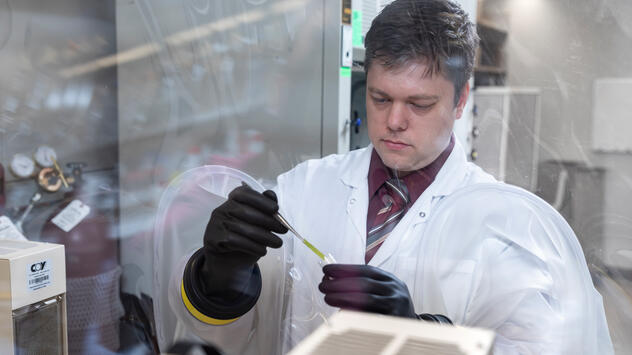 Gastrointestinal barrier research
Gastrointestinal barrier research
Dr. Grover's research team has projects on irritable bowel syndrome, intestinal permeability, gastroparesis and dyspepsia.
Projects
Campylobacter jejuni enteritis in development of irritable bowel syndrome (IBS)
This project's goals are to:
- Better understand the physical processes associated with postinfectious IBS after infection with C. jejuni.
- Lay the foundation for identifying people at risk of postinfectious IBS.
- Develop interventions to decrease the number of new cases of postinfectious IBS.
Dr. Grover's team and others have observed enzymes in the intestine, called proteases, mediating barrier dysfunction and visceral hypersensitivity. Now, the team is focused on learning how the microbiota in the intestine regulate the activity of proteases. The team has discovered that microbial enzymes called β-glucuronidases play an important role in preventing proteases from acting. This occurs through the metabolic conversion of conjugated to unconjugated bilirubin. The lab is examining the specific microbes involved in this process as well as the β-glucuronidases that mediate protease suppression. The project uses gnotobiotic and microbial enzymology experiments as well as bioinformatic strategies.
Developing biomarkers for measurement of intestinal permeability
The lab is developing new and unique in vivo and ex vivo biomarkers to measure mucosal barrier function. Dr. Grover's research team also is expanding on ex vivo techniques to measure barrier function in biopsies taken from people via endoscopy. The goal is to use functional studies of mucosal barrier and secretion to be able to identify each person's individual disease processes and choose treatment strategies accordingly.
Researchers frequently test for poorly absorbable carbohydrates in urine to measure intestinal permeability. The Gastrointestinal Barrier Function Lab has shown that a biomarker called 13C mannitol offers a better molecule than the standard 12C mannitol for in vivo measurement of intestinal permeability.
Molecular and cellular mechanisms in gastroparesis
The National Institute of Diabetes and Digestive and Kidney Diseases Gastroparesis Clinical Research Consortium aims to better understand the physical processes involved in gastroparesis. The consortium investigates new and unique treatments for this condition. Dr. Grover serves as co-principal investigator along with Gianrico Farrugia, M.D.
Findings from the Gastrointestinal Barrier Function Lab have advanced the understanding of interactions between the immune cells, called macrophages, and interstitial cells of Cajal. The lab has found that these interactions play a key role in gastroparesis.
The lab has a repository of full-thickness gastric tissue from patients with well-phenotyped gastroparesis. The research team recruited these patients from across the clinical sites of the gastroparesis consortium. The team is using multiple new sequencing techniques to understand the immune and enteric nervous system architecture in human gut muscle. The team also is using multiomics strategies — including transcriptomics, proteomics and metabolomics — on the same biopsy samples to reveal signaling pathways.
In a separately funded grant that Dr. Grover leads with Dr. Farrugia, the lab is using a murine model of diabetes-induced delayed gastric emptying to study interactions between immune cells and interstitial cells of Cajal. These studies involve tracking white blood cells called monocytes after diabetic injury. The team is unraveling spatial and functional interactions between activated macrophages and other cells of the enteric nervous system, including interstitial cells of Cajal.
Dyspepsia and IBS clinical trials
The Gastrointestinal Barrier Function Lab is routinely engages in clinical trials for functional dyspepsia, irritable bowel syndrome and intestinal pseudo-obstruction. The lab's emphasis in these trials is on studying pharmacodynamics — that is, what specific drugs do to the body — and pharmacokinetics — how drugs move through and are processed by the body. The aim of these studies is to develop new and unique treatments.
The lab has developed tests to measure gastrointestinal transit, sensation and permeability. These tests allow the team to perform detailed categorization of patients with functional gastrointestinal disorders. This sorting is used to select eligible patients for and assess outcomes of clinical trials.
In addition, the lab works with the genomics core of the Mayo Clinic Center for Individualized Medicine for next-generation DNA and RNA sequencing. The laboratory also works closely with the center's microbiome program, for gnotobiotics experiments and bioinformatic analysis.